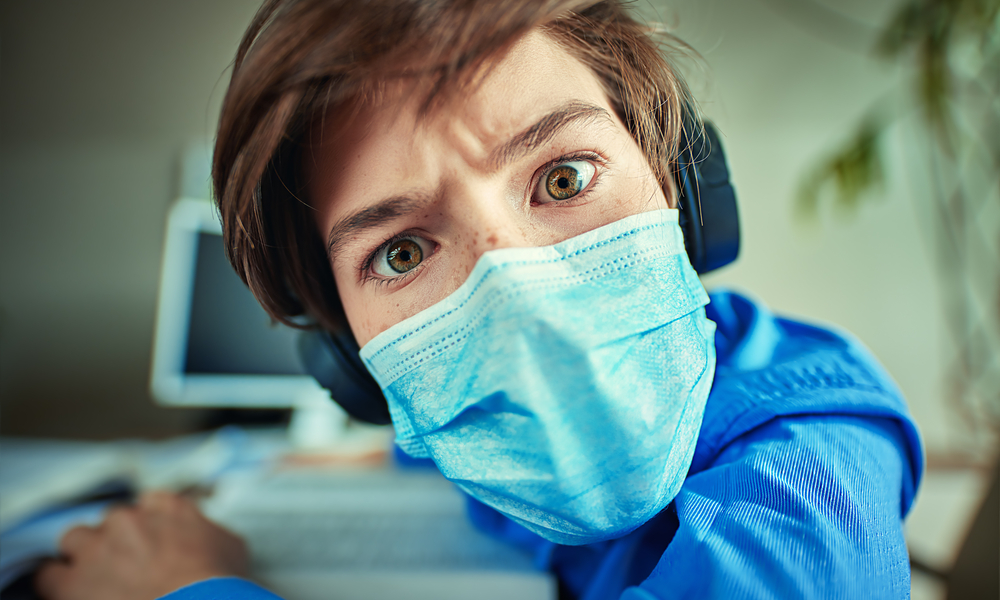Getting children and teens to take coronavirus seriously has been a problem for some parents. Kids may indeed, not understand the seriousness of the global pandemic. As a result, they may try to avoid taking precautions to prevent the spread of the virus, such as better hygiene and social distancing measures. Parents can help children understand and comply with the need for such measures by offering information on the virus, and by keeping the lines of communication open.
Teens, in particular, are likely to flout the new coronavirus rules, as they are known in general, for flouting rules, any rules. There are a few reasons for this. Cameron (Dr. Cam) Caswell notes that most adolescents, for example, believe they are invincible. “They see bad things happen to other people, but never think those bad things could happen to them. So, no matter how many people get sick, it’s difficult for them to comprehend that they could get sick too. And, even if they did, what would it matter? They’re young and healthy so they’re not going to die from it, right?”
Teens Are Egocentric: “I’m Not Sick. What’s the Big Deal?”
But teens, according to Dr. Cam, are also egocentric when compared to adults. “This makes it difficult for them to see things from a perspective different from their own. From their point of view, they’re not sick, their friends aren’t sick, they don’t think they’ll get sick, so what’s the big deal? It may be difficult for them to comprehend how their actions affects others.”
Dr. Cam suggests that teens, by nature, will question everything. “They are not about to accept a vague explanation or do something just because we told them to. They need a reason that makes sense, especially if we expect them to give up so many things that matter to them like hanging out with friends, seeing a boy or girlfriend, going shopping, grabbing coffee, playing sports, even going to school. If you don’t give a good reason for stopping them, they’re going to push back and do the exact opposite of what they’re told just because they can.”
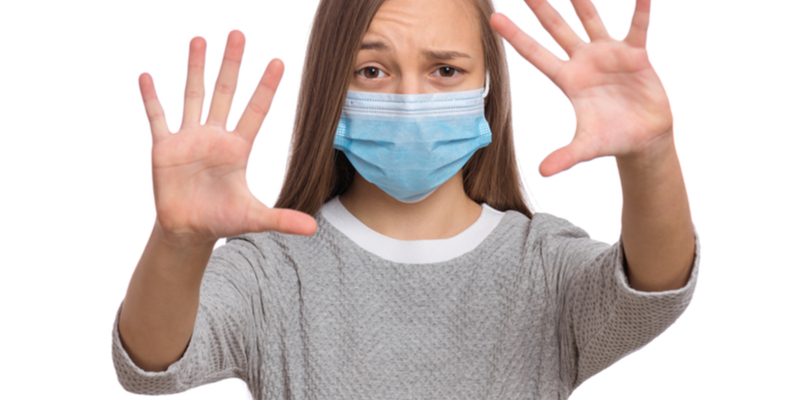
Getting Kids to Take Coronavirus Seriously: Points to Cover
While parents need to give their children a reasonable amount of coronavirus information, Dr. Cam feels that every child is different and can only handle so much knowledge when it comes to learning about the global pandemic. Only a parent can know how much to say, but according to Dr. Cam, here are some important points to cover when talking to kids about coronavirus and coronavirus safety measures:
- This is not about you. You might not think you’re going to get sick, or care if you do, but social distancing isn’t about protecting you and me. It’s about protecting everyone else. It’s about protecting older people like your grandparents. It’s about keeping little babies safe. It’s about making sure kids that are already sick don’t get sicker. Every time you come into contact with someone outside your immediate family, you are increasing the chance that someone else’s loved one will get sick.
- You are not in this alone. It may feel like you’re the only one isolated from your friends, but kids across the entire world are having to stay at home. That means there are about 2 billion other kids also feeling frustrated and stuck.
- It’s not forever. Yes, chances are we’re going to have to live like this for a few months, which may feel like an eternity. But eventually life will go back to normal. Possibly even by summer. How soon this ends depends a lot upon how many of us are responsible about keeping our distance right now. The sooner we all take action, the sooner this will be over.
- COVID-19 is spread from person to person. The virus rides on tiny mucus droplets that fly out when we sneeze, cough, or even spit while speaking. There are two ways we can get the virus from someone else: breathe it in when we talk to them or touch something they’ve contaminated like a doorknob or handrail then touch our face with our “contaminated” hand. Because it’s highly contagious, the more people you’re around, the greater your chance of getting the virus. It’s like tossing a stone into the water. If one person gets it, it creates a ripple effect that spreads far and wide.
- The goal is to slow the spread of the virus. If we throw one stone into the water at a time, the ripples quickly die out and little is impacted. But if we throw a bunch of stones in at once, we stir up the entire lake. It’s the same way with the virus. If too many people get sick at the same time, it causes a bigger impact. And we don’t have enough hospitals, staff, nurses, doctors, medicine, and equipment to take care of everyone at once. That means a lot of people would have to go without care and many of them will die. The only way to make sure as few people suffer as possible is to slow the spread of the virus as much as possible. The sooner we all distance ourselves, the less of an impact the virus will make.
- You can’t tell who has the virus. People can have the virus for three or more days before they know it or show it. So, someone we think is safe may actually be extremely contagious. This is why the virus is spreading so fast and another reason we have to keep our distance from everyone. We have to take coronavirus seriously.
- You have two choices. You must decide if you’re going to part of the problem and help spread the virus and put more lives at risk OR be part of the solution and help slow the virus down and save as many lives as possible. Which choice do you want to make?
- There are 4 things we all must do. If you choose to help slow the virus, here’s what you need to do.
- Wash your hands
- Keep your distance
- Cover your mouth
- Don’t touch your face
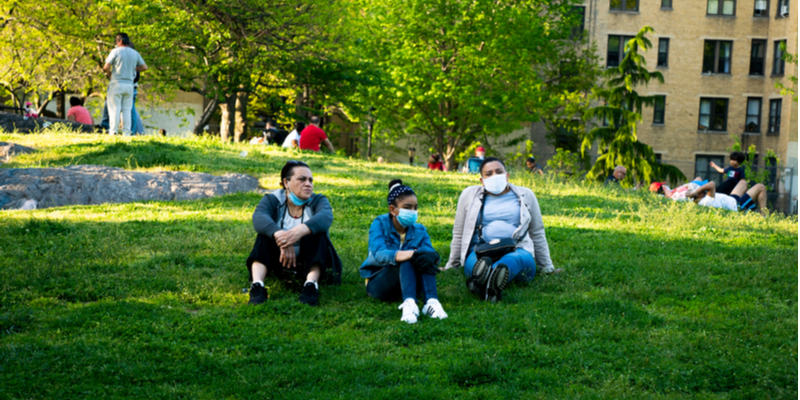
Take Coronavirus Seriously? Kids Don’t See the Risks
Dr. Hela Barhoush, a pediatrician, says that practicing social distancing is particularly challenging for school-aged children and teens. “This is because socializing with peers is an essential element to their happiness and development and they may not have the capacity to fully understand the risks of not following the rules. As the pandemic unfolds, we continue to see children playing sports with one another in fields and teens socializing within 6 feet of another at parks and public spaces.”
Barhoush feels that the parent’s main job is to educate children about coronavirus and the importance of social distancing, mask-wearing, and hand hygiene, but without instilling fear and anxiety. “Conversations about coronavirus should be had at least once a week in every home, and these discussions should be kept simple, direct and reassuring. You want this information to come from you and not from outside sources where you can’t control what information is being fed them,” says Barhoush.
“Your children should look to you as their source of information and come to you with any questions or concerns they might have. But once the conversation is over, don’t dwell on things. Move along, and follow through with validating and acknowledging your child’s feelings.”
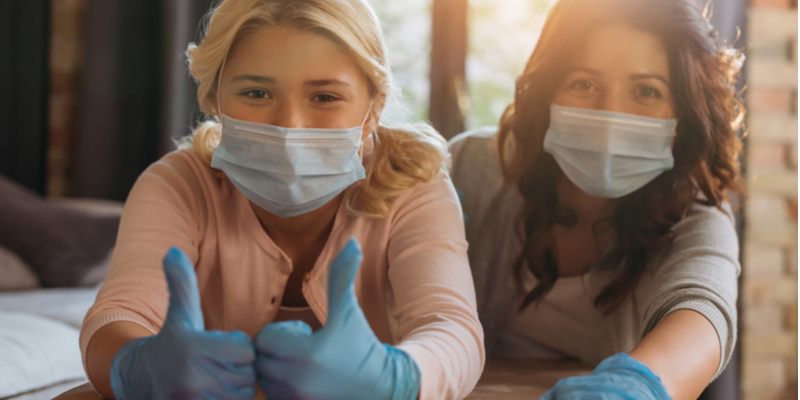
Beginning the Conversation
How should parents begin the conversation? Barhoush says that a parent might say, “I want to talk to you about coronavirus and I want you to know that I am always here for you if you have any questions or concerns, especially as you hear things from others that may not be true.”
The coronavirus should, according to Barhoush, be explained to children in a simple, honest way without causing fear, such as: “Thankfully, in children, coronavirus is usually a very mild illness. If you were to get it, you may not even know, or it may feel like it felt when you had the flu that one time. Only a very small number of kids will have serious problems and thankfully we have medicines to help them if they do.”
Like Dr. Cam, Dr. Barhoush says that explaining the importance of social distancing can only be accomplished by helping children to understand how the virus is spread. A parent might say, “Coronavirus is spread by being in close contact with someone else who has it. This is why it’s so important to keep a distance (two arms’ length) from our friends who don’t live at home with us. It’s also why we wear masks—so we don’t get our saliva on them if we cough or sneeze, and they don’t get their saliva on us. These rules can be frustrating but they are important to keep all of us healthy and safe.”
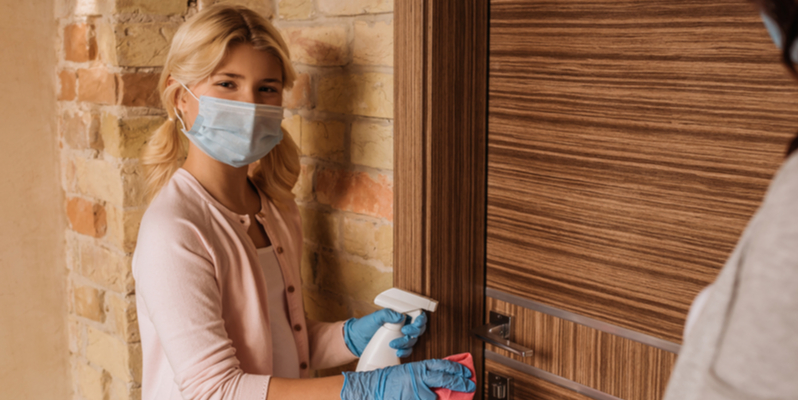
Validate Their Feelings
At the end of a conversation about the coronavirus, Barhoush tells parents to give children the chance to express how they feel about the situation. “Do not judge or interrupt. Acknowledge the child’s feelings: ‘I understand it’s frustrating to be stuck at home and not at school with your friends,’ and then validate those feelings: ‘It’s okay to be frustrated or saddened by all of this, this is a lot to take in.’”
Karen Gross writes about the impact of trauma on education, and in fact sees trauma as the main obstacle in getting kids to take coronavirus seriously. If we lessen the symptoms of trauma in our children, we can curb their rebellious behavior. “Teens are employing what we can term counterphobic behavior. They are actually scared of becoming ill and dying or having their parents (or guardians) or close relatives die. Because of the fear, they act out and do the opposite of the safety measures as if that behavior will protect them and those about whom they care,” says Gross, who suggests the following solution. “Share with them that you understand how scary a time this is. That talking about death and dying is hard, as is sharing the nightmares and fantasies of close family members who are dying. We can’t necessarily go there mentally.
“What we can do as adults is to share the facts—that teens and their peers, for example, are not in the high risk group,” says Gross. Sharing such facts, far from encouraging more risky behavior, helps teens feel more confident about their personal safety. This, in turn, can help teens focus on and deal with more realistic coronavirus fears, says Gross, who adds that parents should only share proven facts about the virus with their children. “Adults can share that mask-wearing and distancing lower the risk of contagion. This isn’t demanding action, which would be met with rebellion. It is pointing out facts—hence offering an opportunity to access the real fears that are producing the teen’s counter-phobic behavior.”
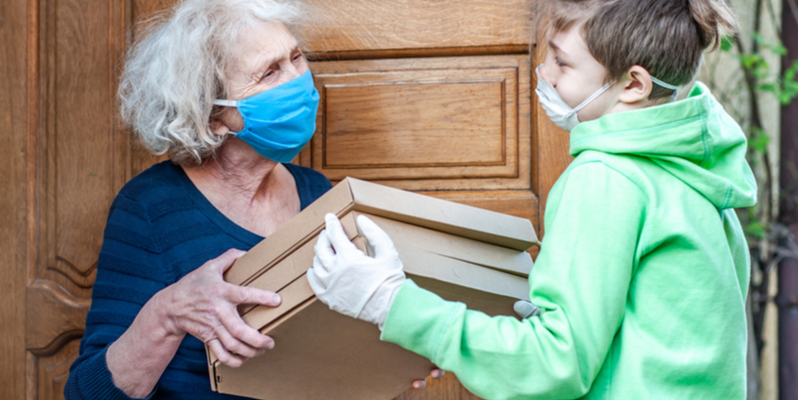
Suggested Pathways to the Teenage Brain
Gross offers a real-life example of how to use this fact-based approach to avoid confrontation. “I saw teens fishing together on a boat without social distancing. I watched and wondered, What if one of the adults had said to the kids: ‘Hey, did you have fun out there? Catch anything? Care to share why you weren’t wearing masks?’
“In other words,” says Gross, “Ask teens to explain their behavior in a context that isn’t threatening. Ask questions rather than provide answers or display anger. And, as a rule of thumb, any adult can carry a couple of extra disposable masks and give them out to any teens they might meet. The point is to enable a gear shift in the teen brain—so they self-reflect, so they open their brains to letting information in. Thoughtful questions are a pathway in; asking for input is another. Gift-giving also offers a pathway to the brain for absorbing important information and helping kids to take coronavirus seriously.”
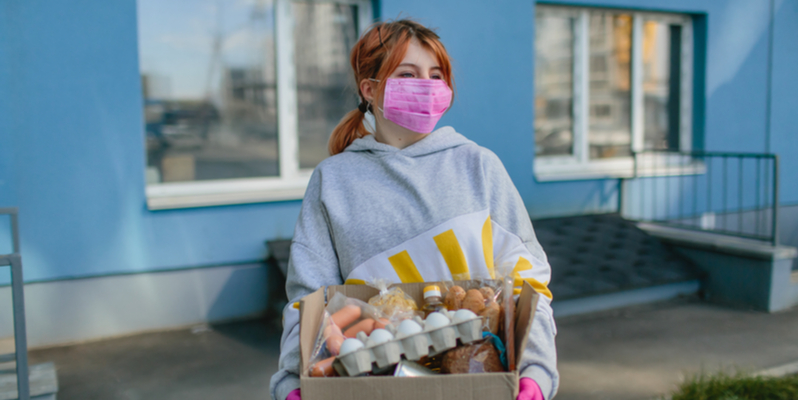
Modeling Compliant Behavior
In addition to talking to kids about coronavirus and validating their feelings, it’s important for parents to model the behavior they want from their children, if they want them to take coronavirus seriously. Children and teens need a concrete example of compliant behavior. So let children see that you are careful about wearing a face mask, not touching your face, keeping your hands clean, and practicing social distancing behaviors.
Positive Peer Pressure
When we think of what peer pressure means, we often think of how kids pressure their peers to engage in risky behavior. But Gross suggests that peer pressure can be used in a positive way to help teenagers adopt coronavirus safety measures. “Identify teens seen as leaders in their own circles. Then put them in charge of pressuring their friends to do the right thing and take coronavirus seriously. This is using peer pressure in a positive way.”
Seeing (and Doing) is Believing
Gross would also encourage teens to work in settings where they can see for themselves what it means to be vulnerable and how important it is, as a result, to comply with social distancing and hygiene measures. Let them don masks, glove up, and deliver food to the elderly in hand-decorated boxes. Have them do a cleanup drive—while gloved and masked—for a local park or beach. They’ll soon take coronavirus seriously enough.
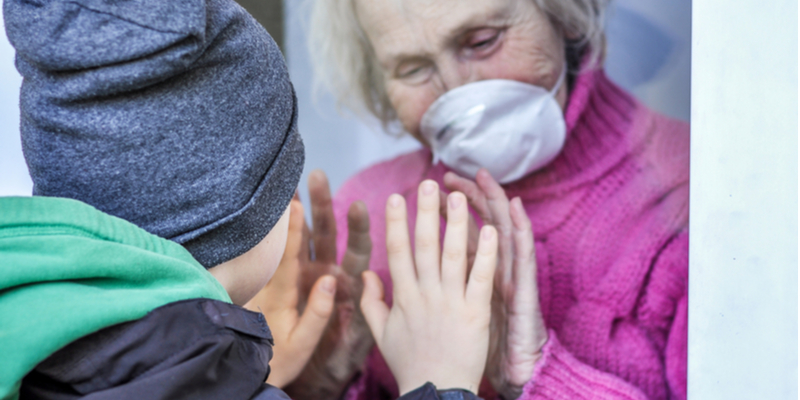
Gross says parents should have teens use physical activity to generate mental change. Because when teens do good works, and show empathy for others, it leads to a change of heart, mind, and behavior. It can happen in even the most stubborn of adolescent children. They just need a bit of a nudge from their parents in the right direction.
